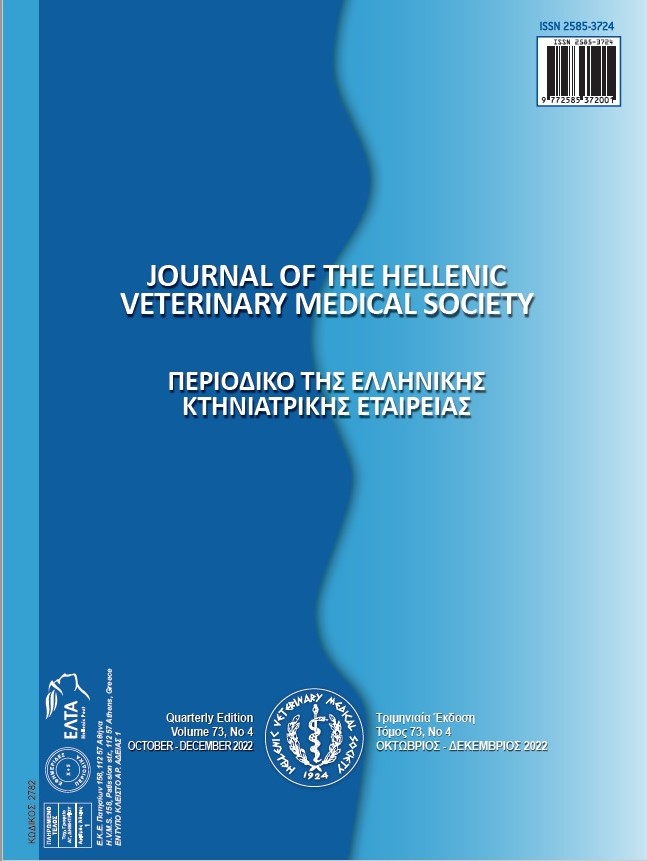Bacteriospermia assessment and its relationship with conventional seminal parameters in stud dogs ejaculates (Canis familiaris)
Abstract
The objective of this work was to determine the frequency of bacteriospermia and its effect on the seminal quality in canines. Dogs were divided into two groups according to weight: small dogs between 1 and 10 kg (Group 1) and dogs with more than 10 kg (Group 2). The foreskin was disinfected in each animal (n=15), and the semen sample was collected by the gloved hand method. Sperm motility, morphology, viability, and concentration were evaluated using a 40x microscope. A 10µL of semen drop was cultured by diffusion method on blood agar and MacConkey agar. Colony-forming units (CFU) were quantitatively evaluated, and biochemical identification was carried out after 48 hours at 37°C. Conventional PCR was performed on the semen samples to evaluate the presence/absence of 11 bacteria. Bacterial growth was found in all samples. The CFU/mL in blood agar were 34042.8 for group 1 and 107714.3 for group 2, while on MacConkey agar were 142.9 CFU/mL, and 21328.6 CFU/mL, respectively. Coagulase-negative Staphylococcus was the most frequent bacteria isolated by conventional culture (64.3%), and Staphylococcus aureus and Klebsiella spp. were the most common bacteria found by conventional PCR. Between both groups, only a statistically significant difference was found in normal sperm morphology. A negative correlation was observed between viability and morphology with CFU on MacConkey agar. One dog was ruled out because he had azoospermia. Canine seminal bacteriospermia is quite frequent and could alter its quality. The presence of Gram-negative bacteria is associated with greater alteration in the semen analysis.
Article Details
- Come citare
-
S. Agudelo-Yepes, J. Puerta-Suárez, D.F. Carrillo-Gonzalez, & Cardona Maya, W. D. (2023). Bacteriospermia assessment and its relationship with conventional seminal parameters in stud dogs ejaculates (Canis familiaris). Journal of the Hellenic Veterinary Medical Society, 73(4), 4785–4794. https://doi.org/10.12681/jhvms.27558
- Fascicolo
- V. 73 N. 4 (2022)
- Sezione
- Research Articles

Questo lavoro è fornito con la licenza Creative Commons Attribuzione - Non commerciale 4.0 Internazionale.
Authors who publish with this journal agree to the following terms:
· Authors retain copyright and grant the journal right of first publication with the work simultaneously licensed under a Creative Commons Attribution Non-Commercial License that allows others to share the work with an acknowledgement of the work's authorship and initial publication in this journal.
· Authors are able to enter into separate, additional contractual arrangements for the non-exclusive distribution of the journal's published version of the work (e.g. post it to an institutional repository or publish it in a book), with an acknowledgement of its initial publication in this journal.
· Authors are permitted and encouraged to post their work online (preferably in institutional repositories or on their website) prior to and during the submission process, as it can lead to productive exchanges, as well as earlier and greater citation of published work.



